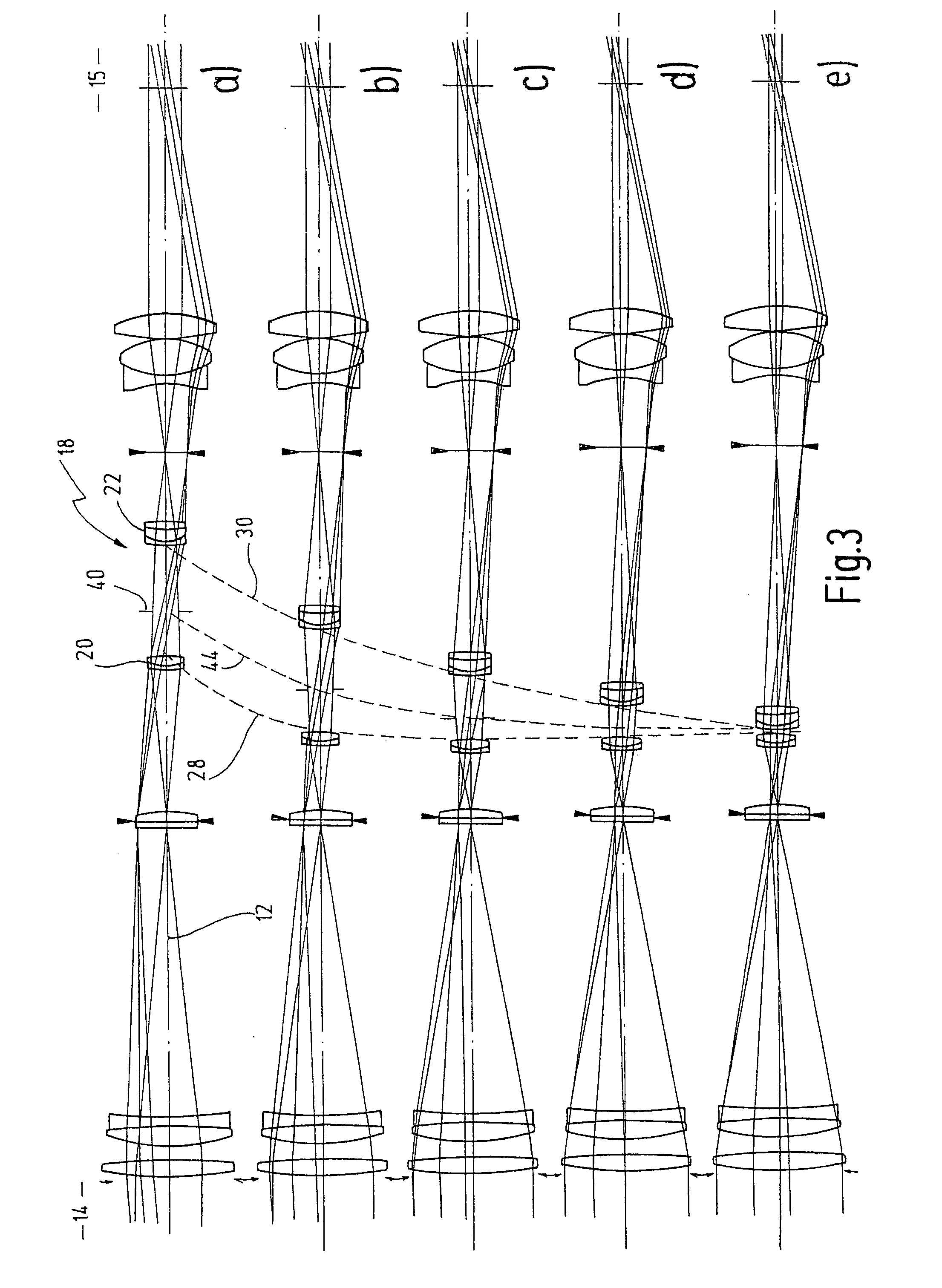Telescope with variable magnification
a telescope and magnification technology, applied in the field of zooming telescopes, can solve the problems of limiting the field of vision, deteriorating image quality, and inability to provide an inversion system
- Summary
- Abstract
- Description
- Claims
- Application Information
AI Technical Summary
Benefits of technology
Problems solved by technology
Method used
Image
Examples
Embodiment Construction
[0032] In FIG. 1, reference numeral 10 as a whole designates an embodiment of a telescope according to the present invention being schematically illustrated with its ray path. Telescope 10 has an optical axis 12. In FIG. 1 the object side 14 is shown left and the image side 15 is shown right.
[0033] On object side 14 one can see an objective lens 16 which, as the case may be, may be provided with an objective lens aperture stop 17 or may configure same itself.
[0034] On the right hand side next to objective lens 16 an inversion system 18, also referred in the art as erection system, with variable magnification is shown on optical axis 12. It is, therefore, a system which combines in itself both functions, namely a variable magnification and an image inversion.
[0035] Inversion system 18 is provided with a first lens group 20 as well as with a second lens group 22 arranged at a predetermined axial distance with respect to one another.
[0036] Finally, there is still an eyepiece 23 arr...
PUM
 Login to View More
Login to View More Abstract
Description
Claims
Application Information
 Login to View More
Login to View More - R&D
- Intellectual Property
- Life Sciences
- Materials
- Tech Scout
- Unparalleled Data Quality
- Higher Quality Content
- 60% Fewer Hallucinations
Browse by: Latest US Patents, China's latest patents, Technical Efficacy Thesaurus, Application Domain, Technology Topic, Popular Technical Reports.
© 2025 PatSnap. All rights reserved.Legal|Privacy policy|Modern Slavery Act Transparency Statement|Sitemap|About US| Contact US: help@patsnap.com



